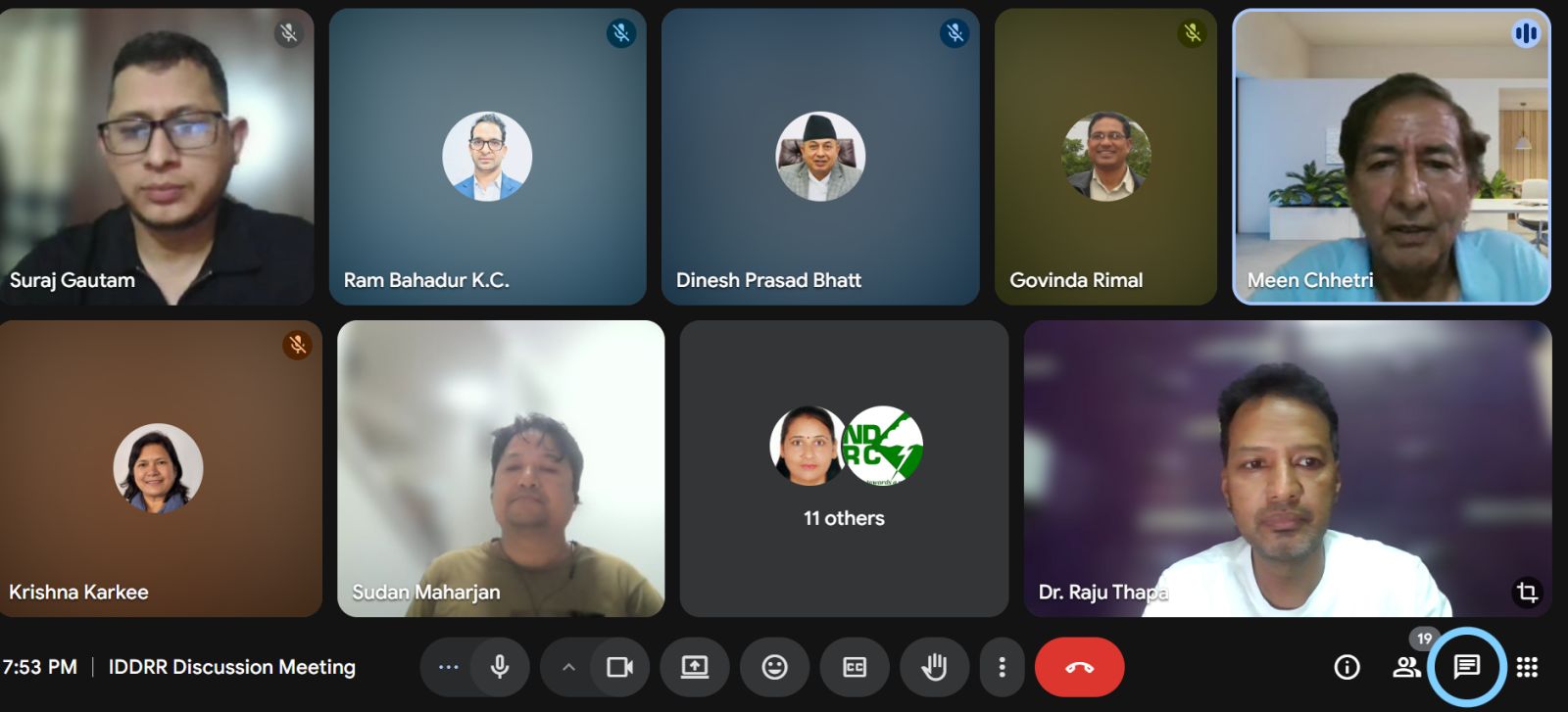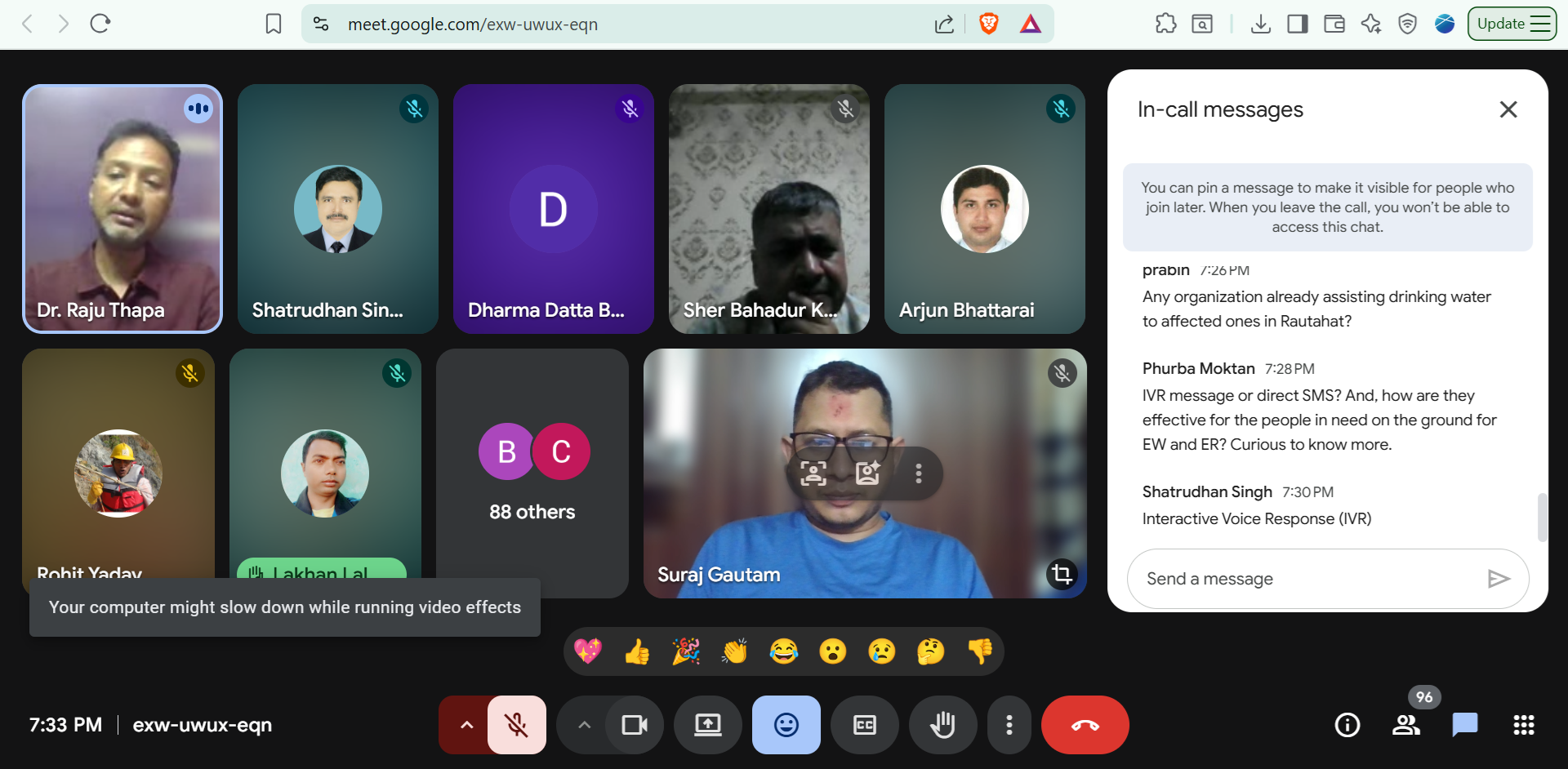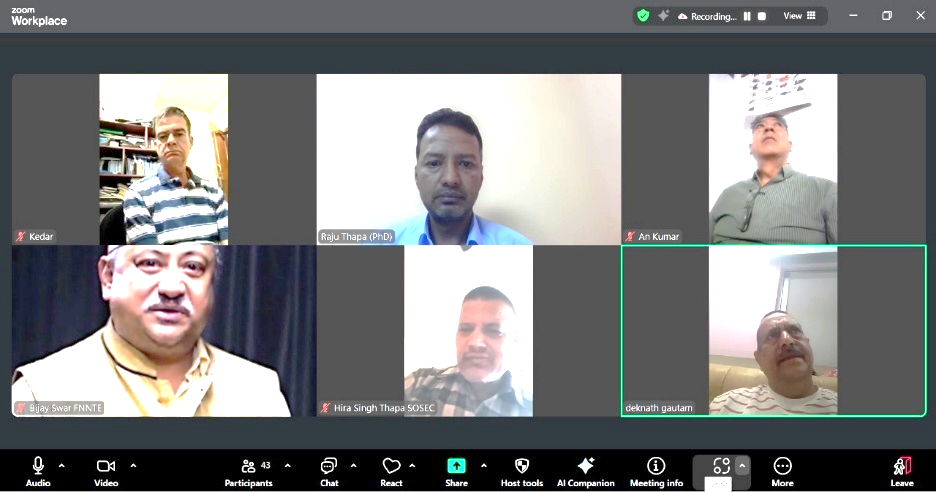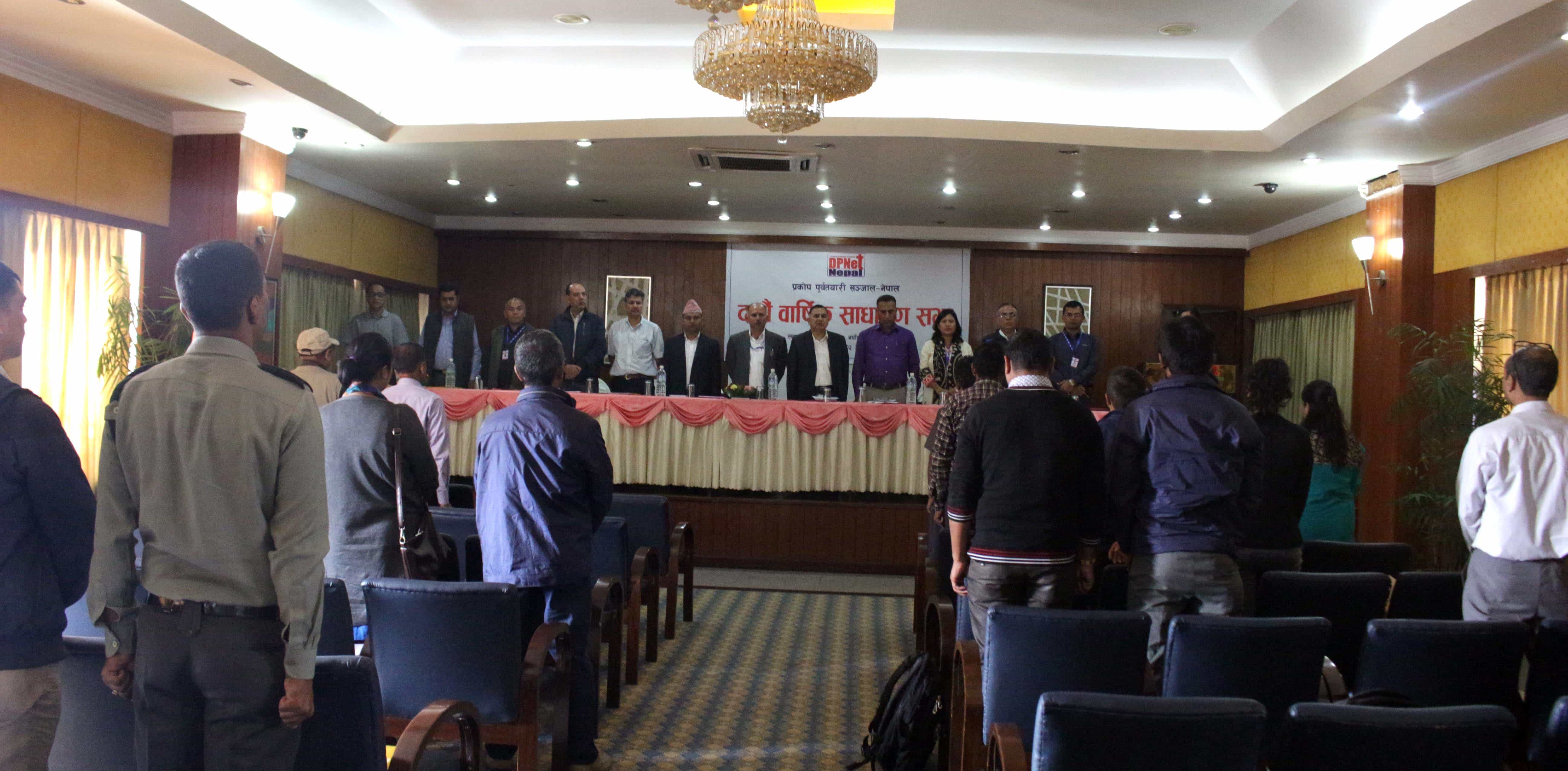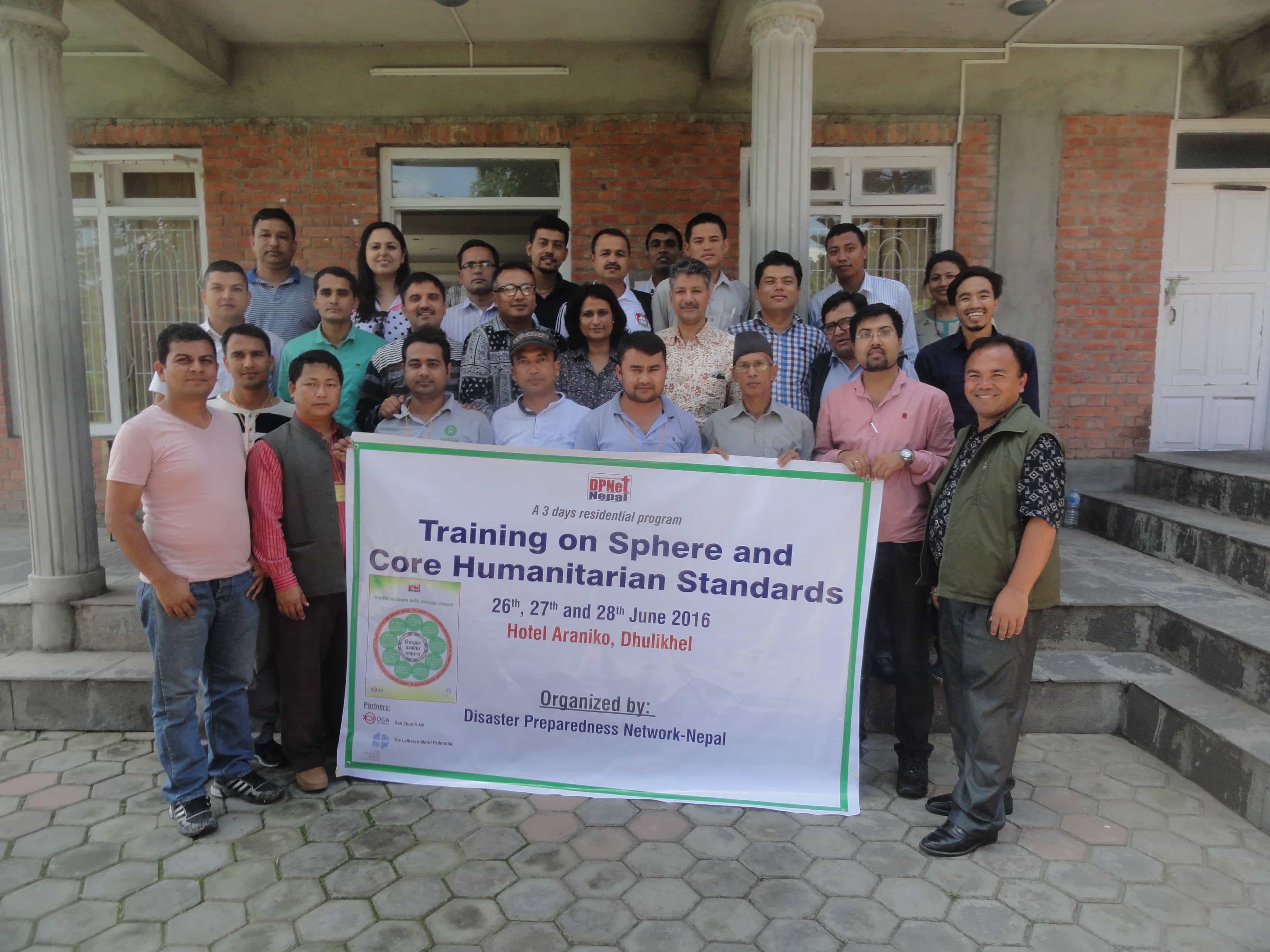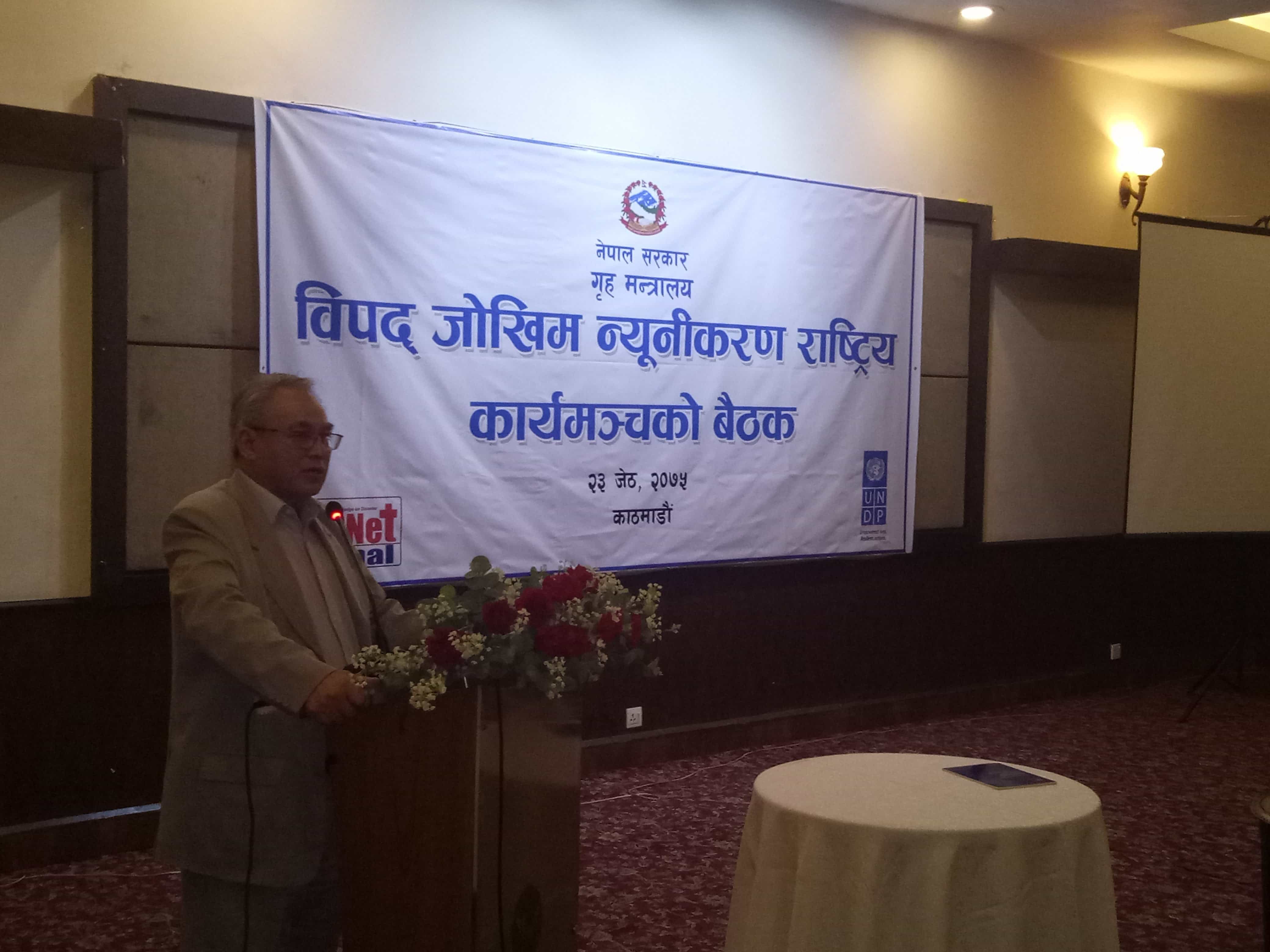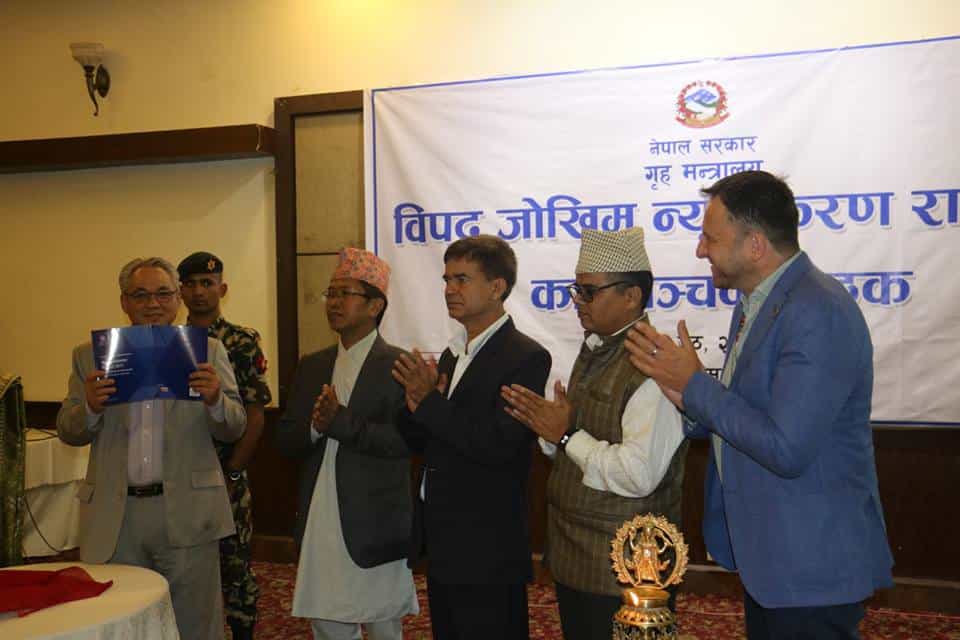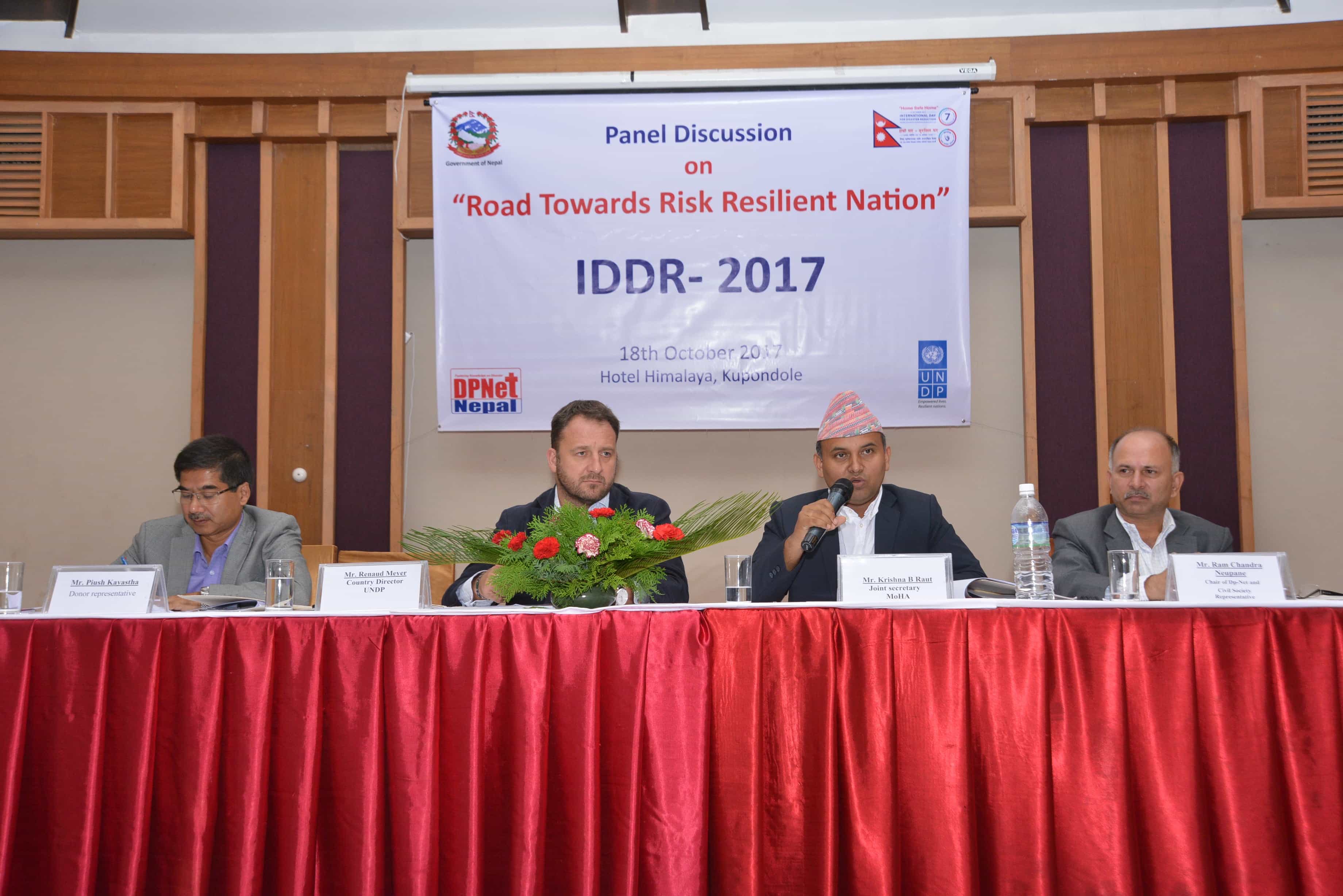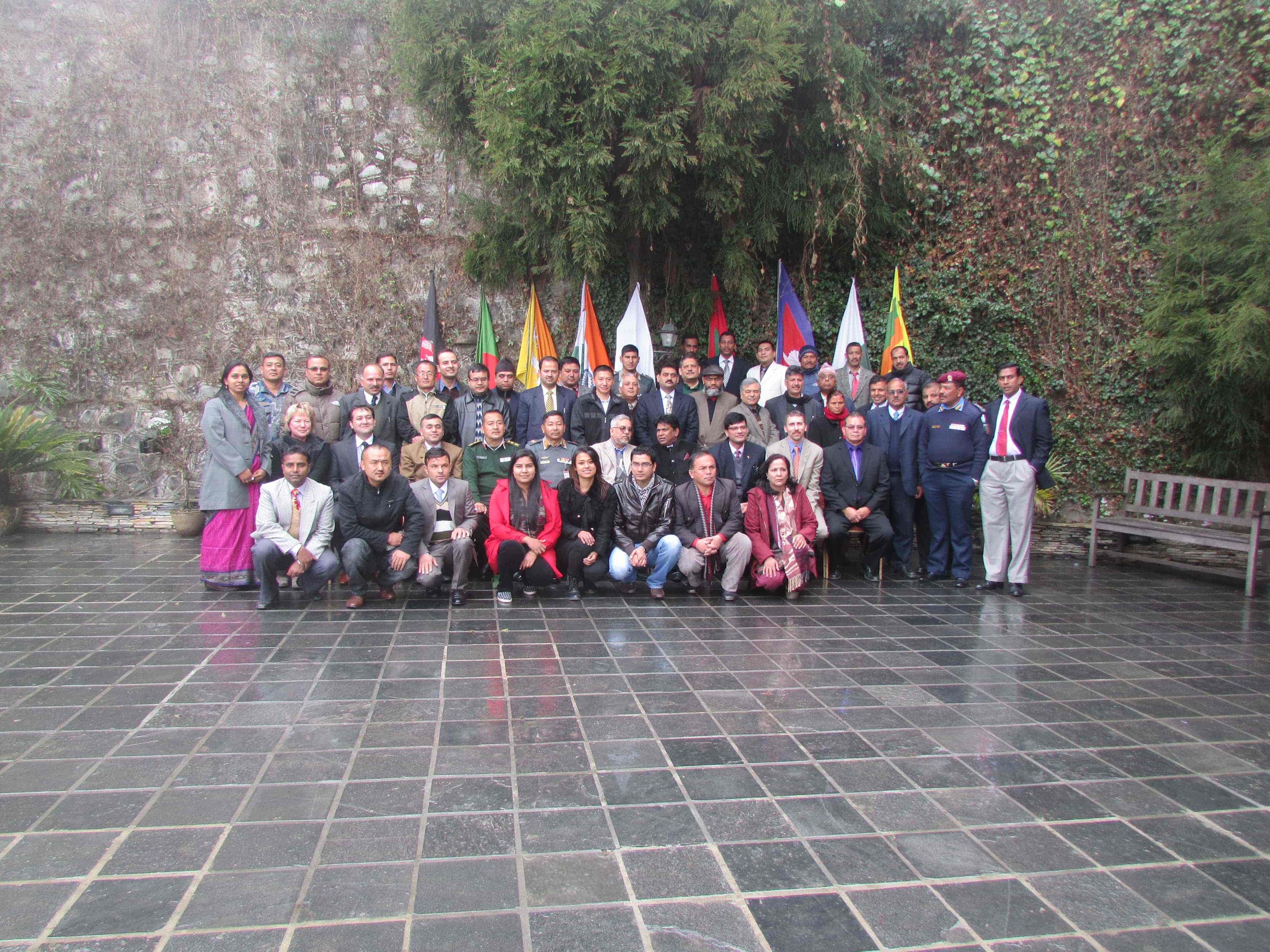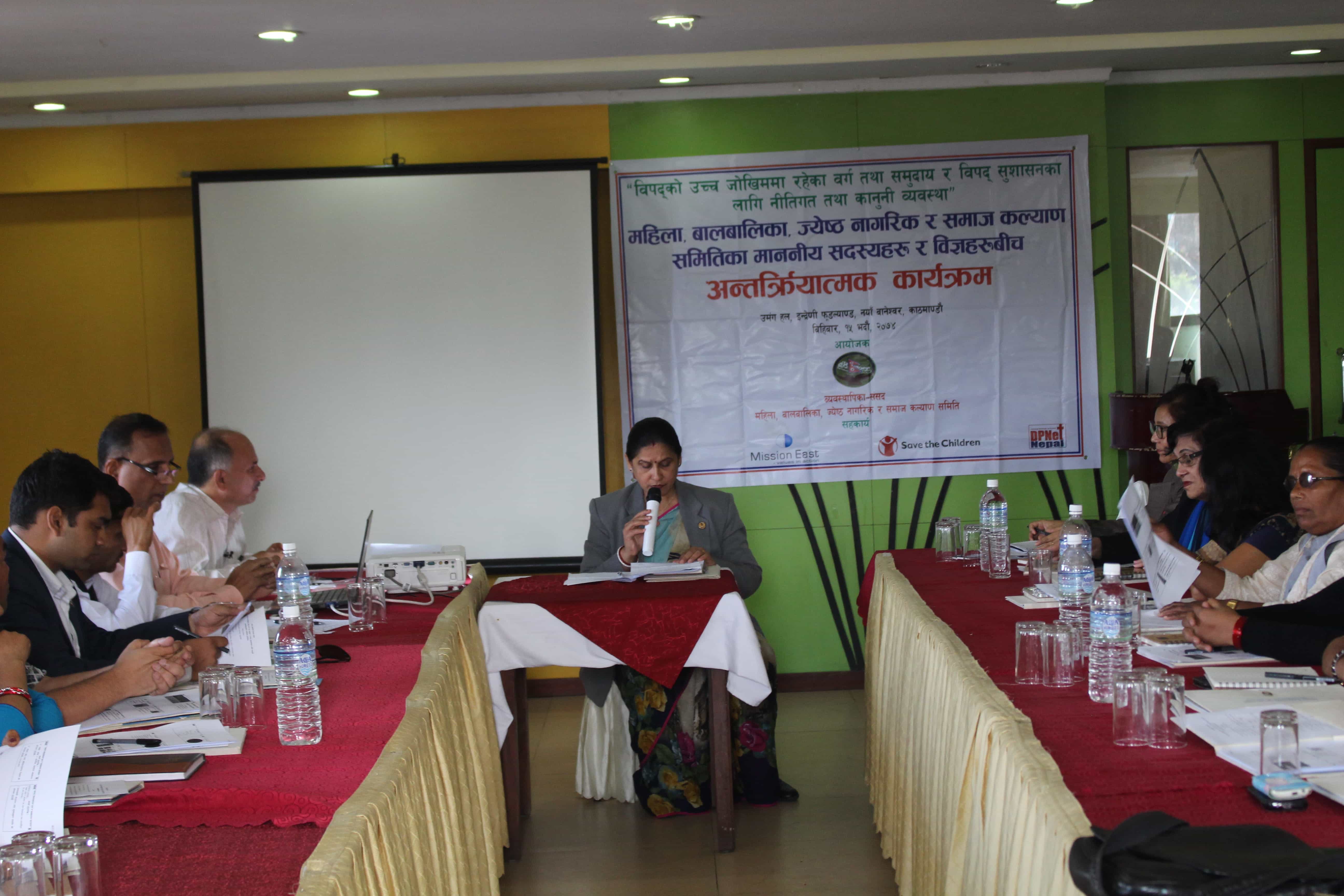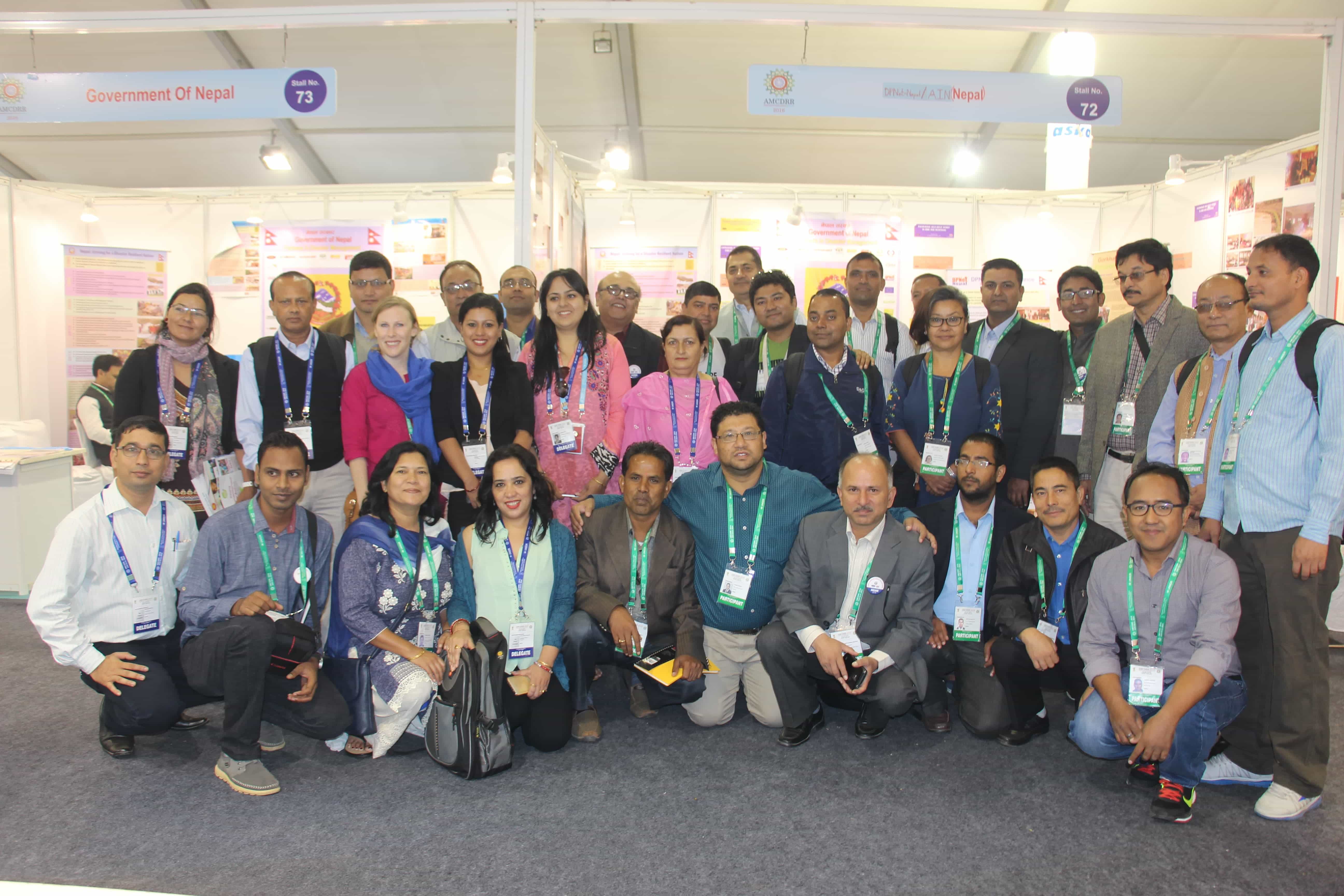DPNet Nepal Host 16th AGM along with the Monsoon Review and Reflection Meeting
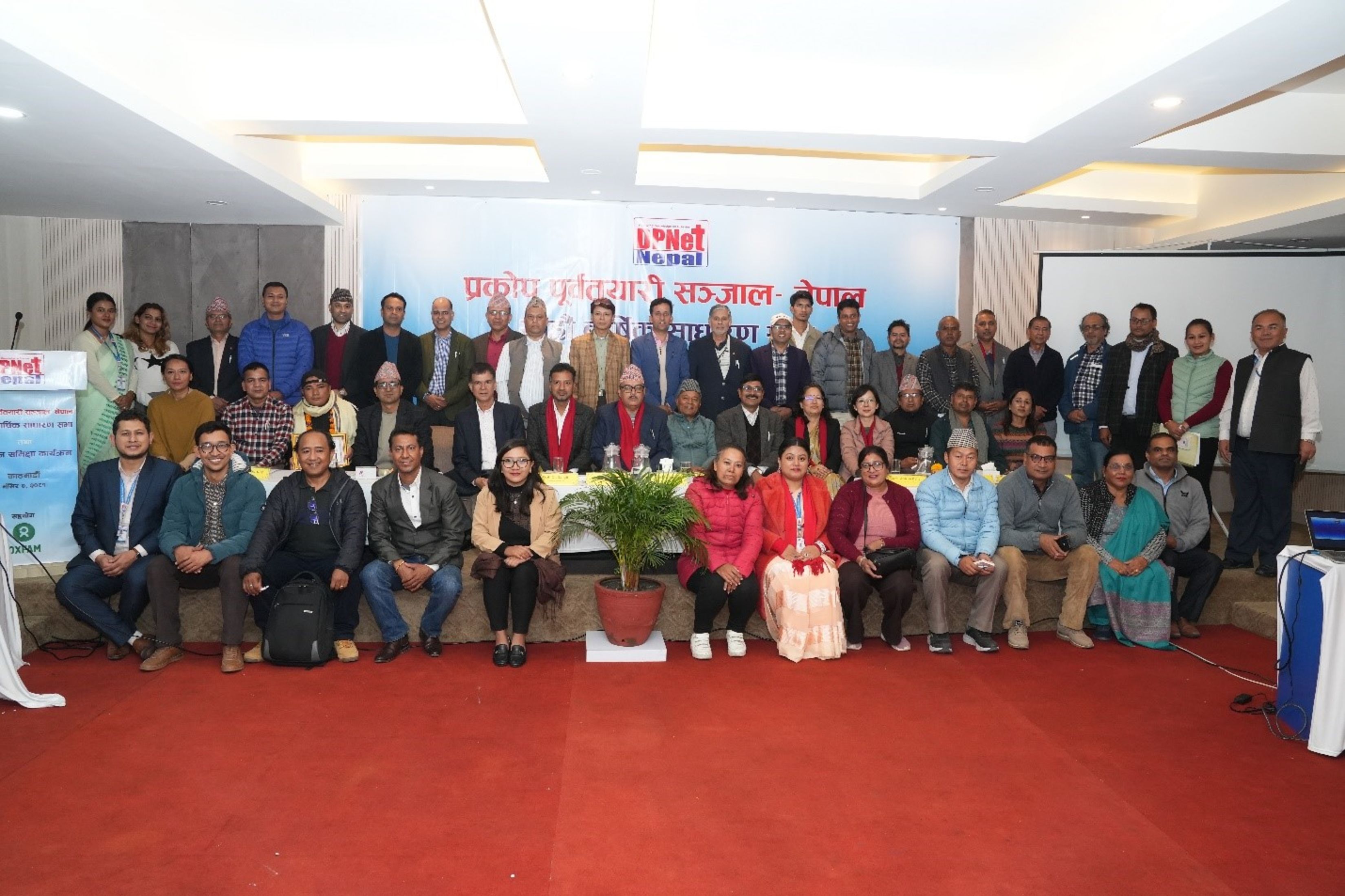
On November 22, 2024, DPNet held its 16th General Assembly along with the Monsoon Review and Reflection Meeting at Kathmandu support of Oxfam Nepal. The event was chaired by Dr. Raju Thapa, Chairperson of DPNet, and featured Mr. Anil Pokhrel, Executive Director of the Nepal Disaster Risk Reduction and Management Authority (NDRRMA), as the Chief Guest. The program was graced by distinguished guests, including Prof. Dr. Sangita Singh (Immediate Member, NPC), along with DRR experts from various organizations working on DRR. The Special guests were Mr. Ram Prasad Subedi (Chair, NGO Federation), Ms. Tripti Rai (Country Director, OXFAM), and Mr. Santosh Dahal (HCO at UN). The program was inaugurated with the national anthem and a solemn moment of silence to honor and remember all those who lost their lives due to disasters. The Chief Guest and Special Guest marked the inauguration pouring water into a plant, symbolizing a tribute to nature.
The opening session was followed by the welcome speech of Ms. Shakti Gurung, Vice-chairperson of DPNet Nepal. Ms. Gurung extended a warm welcome to all the participants all our distinguished guests and the chief guest present. Also like to acknowledge and welcome all the dignitaries on the dais.
Objective Sharing by Mr. Surya Bahadur Thapa, IPP, DPNet Nepal
Mr. Thapa extended a warm welcome to all participants of DPNet's 16th General Assembly, including the Chief Guest, Mr. Anil Pokhrel and representatives from media, NGOs, INGOs, the Nepal Army, and DPNet province chairpersons. He expressed gratitude and respect for their presence, emphasizing the significance of collective efforts in achieving DPNet’s vision of a disaster-resilient Nepal. Since its establishment in 1996, DPNet has worked diligently, relying on collaboration and dedication to address the pressing challenges posed by disasters in Nepal. Despite the annual occurrence of devastating events leading to significant loss of life, gaps in disaster response remain a major concern. Mr. Thapa highlighted that while DPNet operates with limited resources and a small team of three short-term staff members, it has demonstrated remarkable efficiency and capability in managing National/International programs. However, he acknowledged that the lack of financial resources restricts the organization’s potential to fully leverage its efforts. To overcome these challenges, he appealed for support to enhance DPNet’s capacity and expand its impact. He also has insight into the key contributions made by DPNet, including conducting training programs at local and provincial levels to build disaster response capacity, organizing cultural events like folk song programs to foster awareness and resilience, and implementing monsoon-related initiatives such as media monitoring to gather and disseminate critical information. The address concluded with a heartfelt expression of gratitude to all stakeholders and a reaffirmation of DPNet's commitment to building a safer and more resilient Nepal through collaboration and collective action.
Mr. Suraj Gautam, General Secretary, DPNet Nepal outlined the introduction of DPNet Nepal. He illustrated that the DPNet is a national umbrella organization dedicated to enhancing disaster management in Nepal through coordination, collaboration, and knowledge sharing among national and international stakeholders. It works closely with the Government of Nepal, particularly the Ministry of Home Affairs and NDRRMA, serving as a bridge between governmental and non-governmental agencies. As the Secretariat of the National Platform for Disaster Risk Reduction (NPDRR), DPNet convenes stakeholders to strengthen disaster preparedness and management. With 186 members, DPNet focuses on coordination, knowledge management, capacity building, and policy advocacy to promote effective disaster management practices in Nepal. Mr. Gautam highlighted the key activities including the integration of modern tools like ORC and Virtual DRR Platform in our website, monsoon preparedness initiatives, and weekly updates regularly being updated which ensures consistent information sharing through weekly updates on opportunities with regular communication and publication through bulletins, WhatsApp, email, and online platforms, ensuring transparency and effective information sharing. Additionally, monthly bulletins are published to keep stakeholders informed. DPNet is also enhancing media collaboration with the help of RSS (Rastriya Samachar Samiti) which brings the Monsoon overview from 2081. The organization has expanded its provincial outreach to all seven provinces and is planning to distribute laptops to enhance operational efficiency. Collaborations with organizations like FAO further strengthen DPNet’s initiatives. Looking ahead, the organization has planned to outline a roadmap for 2025 to 2030 to ensure sustainable operations and impactful programs, with plans to present these strategies to stakeholders. Provincial platforms remain pivotal to DPNet’s work, and additional support is requested to strengthen these initiatives. Mr. Gautam emphasized that with gratitude for the continued support of all partners and stakeholders, DPNet remains committed to achieving its goals.
Visual Presentation on Monsoon 2024 by Mr. Krishna Adhikari, Chief Reporter, Rastriya Samachar Samiti
The presenter Mr. Krishna Adhiari delivered a visual presentation featuring videos and photographs to provide a comprehensive overview of the monsoon in 2081. The presentation highlighted various aspects of the monsoon's impact, starting with a detailed depiction of human losses suffered during this period. It also showcased news coverage published in multiple languages, aiming to reach and inform diverse audiences. The disaster situation was portrayed with visual evidence, alongside recommendations for mitigation strategies, which have been disseminated as part of awareness initiatives. Additionally, the presentation documented the loss of animals and included photographs illustrating the setbacks to developmental activities caused by the monsoon. The overall goal of the presentation was to provide a thorough understanding of the monsoon’s impacts and to outline actionable steps for addressing these challenges in the future.
Mr. Govinda Kumar Jha, Meteorologist, Department of Hydrology and Meteorology
Mr. Jha addressed the challenges faced during the 2024 monsoon season and emphasized the need for future preparedness in his presentation. Speaking on behalf of the department, one of the four key branches under the Ministry of Hydrology and Meteorology, he highlighted its role in monitoring and analyzing weather patterns, disseminating weather reports across Nepal, and catering to various sectors, including agriculture and high-altitude regions. The department also provides detailed updates on lightning and other weather phenomena and has recently launched a toll-free number (1155) to improve public access to weather information. Mr. Jha outlined key weather observations for this year, noting that the monsoon season brought challenges such as heatwaves, lightning, and thunderstorms, which resulted in significant losses. Starting on June 20 and concluding on October 1, the monsoon delivered 80% rainfall across the country, with Pokhara recording the highest levels, and overall rainfall reaching 120% of the annual average. The department had accurately forecasted the monsoon patterns on Baisakh 31 (mid-May). During extreme weather events, red alerts and special bulletins were issued to NGOs and media outlets to enhance public awareness. He also discussed several challenges and gaps faced by the department. Technological limitations, such as outdated database systems and non-functional software, hinder accurate forecasting. Human resource constraints, exacerbated by budget limitations, impact the department’s ability to handle calls and expand its workforce despite the introduction of the toll-free number. Miscommunication by the media, including sensational headlines that caused unnecessary panic, was another concern, with a call for responsible reporting to avoid public alarm. Finally, the increasing frequency and complexity of climate change incidents add challenges to the department's research and forecasting capabilities. Through this discussion, Jha aimed to provide a clear understanding of the monsoon's challenges while emphasizing the need for improved resources, responsible communication, and enhanced preparedness to address future weather-related events effectively.
Ram Prasad Bhandari, DPNet Technical Advisor, and CBDRM Expert, conducted a media analysis on the 2024 monsoon, focusing on priority areas for river basin and flood risk management. The Government of Nepal, in collaboration with the Asian Development Bank (ADB), has been implementing a flood risk management project aimed at integrating small-scale livelihood projects led by NGOs and INGOs into a more unified approach. Reflecting on the Monsoon Watch 2024, Mr. Bhandari questioned why significant challenges persist despite efforts on various scales. His analysis utilized both quantitative data, such as human and property losses reported in the media, and qualitative data validated through cross-triangulation. He emphasized that the Field examples highlighted gaps in community awareness and preparedness. In Morang, the Budhikohila flood swept away two houses and claimed one life, with affected individuals fishing near the flood area despite the risks. In Jajarkot, a teacher drowned while fishing at 1 AM, pointing to culturally or livelihood-driven risk-taking behaviors. Similarly, in Rukum West, guidelines restricting movement in high-risk areas were ignored, raising concerns about enforcement and community compliance. The analysis also revealed discrepancies between media reporting and official alerts. While media coverage provided real-time updates, the DHM faced limitations in its SMS alert system, often delivering warnings after disasters occurred. For instance, DHM issued an alert on Baisakh 31 predicting an intense monsoon, but delays in follow-up actions and updates hampered preparedness. Gaps were evident when NDRRMA issued vehicular movement restrictions on Asoj 11 and 12, yet DHM updates on incidents like the Khulekhani Dam lagged behind online media reports. Mr. Bhandari emphasized the need for detailed analyses of damages and losses, supported by visual presentations, to better understand the systemic gaps. The challenges of the monsoon season highlight the importance of faster documentation, actionable strategies, accurate media reporting, and active local government involvement. By addressing these gaps, Nepal can significantly reduce losses and improve flood risk management.
The Q&A session raised critical concerns about disaster preparedness, climate change, and urbanization, reflecting on the challenges faced during intense monsoon seasons and other disasters:
- Mr. Krishna Bhul: Highlighting the increasing intensity of the monsoon due to climate change, he pointed out a major fire incident in Saptari and Siraha on Baisakh 12, where 103 houses were destroyed. Mr. Bhul emphasized the lack of coordination and information sharing among organizations regarding such disasters in the Terai region. He suggested that DPNet could play a crucial role in supporting affected communities and stressed the need for a disaster calendar to better address seasonal risks, particularly for vulnerable small settlements.
- Mr. Krishna Govinda Adhikari: Reflecting on this year's monsoon, he noted that significant impacts have been observed since 2028 in history and highlighted the changing patterns of monsoons that may occur in the future. He raised questions about incorporating long-term planning and safety measures in urbanization efforts, especially concerning road construction which can withstand at least up to 300 mm of monsoon rainfall.
- Mr. Hari Krishna Shrestha: Mr. Shrestha asked about immediate and long-term actions required to mitigate water flow and flood risks. He questioned the construction of walls blocking rivers and called for clarity on responsibilities regarding river management, flood mapping, and ensuring safe housing locations. He also raised concerns about behavioral responses to DHM alerts, emphasizing the need for clear guidance on evacuation and safety measures for residents in danger zones.
- Ms. Krishna Karki: She inquired about positive media responses and the current status of the recovery process, particularly regarding disabilities, women, and children. Ms. Karki sought insights into the challenges and gaps in addressing these issues, underlining the importance of targeted recovery and inclusive planning.
- Mr. Jaganath Prasad Kurmi: He stressed that despite substantial investments in developing Local Adaptation Plans of Action, their implementation remains neglected. He observed that engaging or authorizing local leaders, such as ward chairpersons, often results in favoritism toward their past voters. Furthermore, he highlighted the critical gaps in preparedness and planning at the local level, which hinder effective progress.
- Mr. Amit Singh (APF DSP): He pointed out significant gaps in preparedness efforts despite collaborative initiatives. He suggested that DPNet should take a more proactive role in informing all agencies about disaster preparedness. Mr. Singh noted that while technology and capabilities have advanced, the approach to disaster management still resembles outdated practices, calling for a more modern and integrated approach.
- Dr. Bishal Nath Uprety: He highlighted the issue of fire hazards and referenced research conducted by Prof. Dr. Jibraj Pokhrel on house modeling. He noted that traditional indigenous structures often used khar (thatch) for roofing, which poses a significant risk of fire spreading throughout the community in case of an outbreak. While these technologies and preventive measures have been introduced at the local level, there remains a lack of proactive engagement from donor agencies and government bodies to adopt and implement preventive approaches effectively.
The session highlighted the urgent need for improved coordination, inclusive planning, and the modernization of disaster risk management strategies to address the growing challenges posed by climate change and urbanization.
Felicitation of Mr. Chanik Lal Tamang for his Heroic Efforts by awarding him Rs. 10,000 and a certificate of appreciation. Mr. Chanik Lal Tamang, shared his personal experience of heroism. On a Saturday at 5:30 AM, he went to observe a river, accompanied by his wife and daughter. In the incident, he described witnessing a person swept down by the river current. Despite his family’s disapproval, he save the lives of two people.
Remarks by IGP Sanat Basnet, Chairperson, ICMS
The ICMS Chairperson commended DPNet for its efforts in creating DRR knowledge platform in Nepal. Mr. Basnet emphasized the need for training on disaster-related matters and expressed aspirations to collaborate with various organizations to enhance disaster management.
Remarks by Key Guests
Ms. Tripti Rai, Country Director, Oxfam
Ms. Rai praised the work performed by local humanitarian leaders like Mr. Chanik lal Tamang in disaster management. Oxfam, along with other NGOs, focuses on collaborating with local leaders and District Development Committees to enhance data localization and disaster response. She stressed the need to address gaps and learn from other organizations' experiences to improve future disaster management strategies.
Mr. Ram Prasad Subedi, Chair, NGO Federation
Mr. Subedi congratulated DPNet on its 16th General Assembly and lauded Dr. Raju’s leadership. He highlighted the importance of preventive measures and raising awareness through civil society, which often acts as the first responder during disasters. However, he pointed out systemic issues such as ineffective Service Delivery Mechanisms (SDM) and delays in fund allocation for affected areas like Jajarkot. He called for disaster learning centers in every ward and municipality, emphasizing the need for aligning budgets with disaster-related goals.
Mr. Anil Pokhrel, Chief Guest
Mr. Pokhrel expressed gratitude to the organizers and praised DPNet for its contributions to disaster risk reduction. Reflecting on the year’s experiences, he noted that floods now affect urban areas like Kathmandu, underscoring the need for measures beyond early warning systems. He highlighted efforts such as assisting thousands during disasters, enforcing safety protocols, and publishing disaster preparedness guidelines. Mr. Pokhrel emphasized localizing disaster-related data and expressed confidence in achieving more impactful results through collective efforts.
Prof. Dr. Sangita Singh (National Planning Council)
Dr. Singh acknowledged Mr. Tamang’s inspiring contributions and stressed the importance of addressing gaps in urban planning and disaster management. She emphasized the integration of indigenous knowledge, participatory approaches, and research implementation to address risks like collapsed bridges and unsafe housing in vulnerable areas. Ms. Singh illustrated that the Student research often stays theoretical, but with collaboration between institutions and civil society, we can achieve tangible results. The key issue is the lack of implementation.
Closing Speech by Dr. Raju Thapa
Dr. Raju Thapa thanked all attendees and acknowledged the knowledge-sharing role of DPNet in disaster management. He emphasized the importance of utilizing academic knowledge effectively during disaster management and encouraged other organizations to collaborate with DPNet in future projects. He ensures to keep all the comments and suggestions in the guiding document of DPNet Strategic planning. Finally, Dr. Thapa requested all stakeholders to keep DPNet in mind when undertaking disaster-related initiatives to work collaboratively.
Following the opening session of the DPNet AGM, a closed session was held to discuss key agenda items. Members engaged in productive deliberations, addressing organizational priorities and planning for the year ahead. The closed session provided a platform for strategic discussions, fostering alignment among stakeholders on DPNet’s goals and objectives.
Recommendations on Future Monsoon
Based on the paper presentation, participant feedback, remarks, and recommendations collected through DPNet's virtual DRR platform, the following consolidated recommendations were developed to address key disaster risk reduction challenges. These insights reflect a collaborative approach to enhancing preparedness, response, and resilience at local and national levels.
Establish accountability mechanisms by investigating negligence among responsible authorities and taking disciplinary actions to ensure responsibility in future disasters.
Strengthen early warning systems by integrating real-time data from meteorological stations, river gauges, and mobile alerts for timely dissemination to vulnerable communities.
Ensure proactive disaster preparedness by acting immediately on weather forecasts without delays caused by "if" or "but" scenarios.
Develop a national addressing system to improve disaster location reporting and facilitate precise mapping of high-risk areas.
Enhance resources and capacity of rescue and emergency response teams to address the growing scale and complexity of disasters.
Enforce traffic regulation policies during extreme weather events to prevent road accidents and damage, as demonstrated by the Narayangadh-Mugling highway incident.
Promote community awareness and preparedness, ensuring timely dissemination of warnings to prevent losses, as seen in the Chhalnakhel, Kathmandu flood incident.
Mandate the registration and insurance of businesses, ensuring financial recovery for business owners and banks during disasters.
Regulate human activities in watershed areas, such as excavation and deforestation, to minimize risks of floods and landslides through sustainable land-use practices.
Protect and rehabilitate floodplains, preventing encroachment in undeveloped areas and regulating development in built-up zones.
Conduct regular training and mock drills for local governments, responders, and communities to improve disaster response and preparedness capacities.
